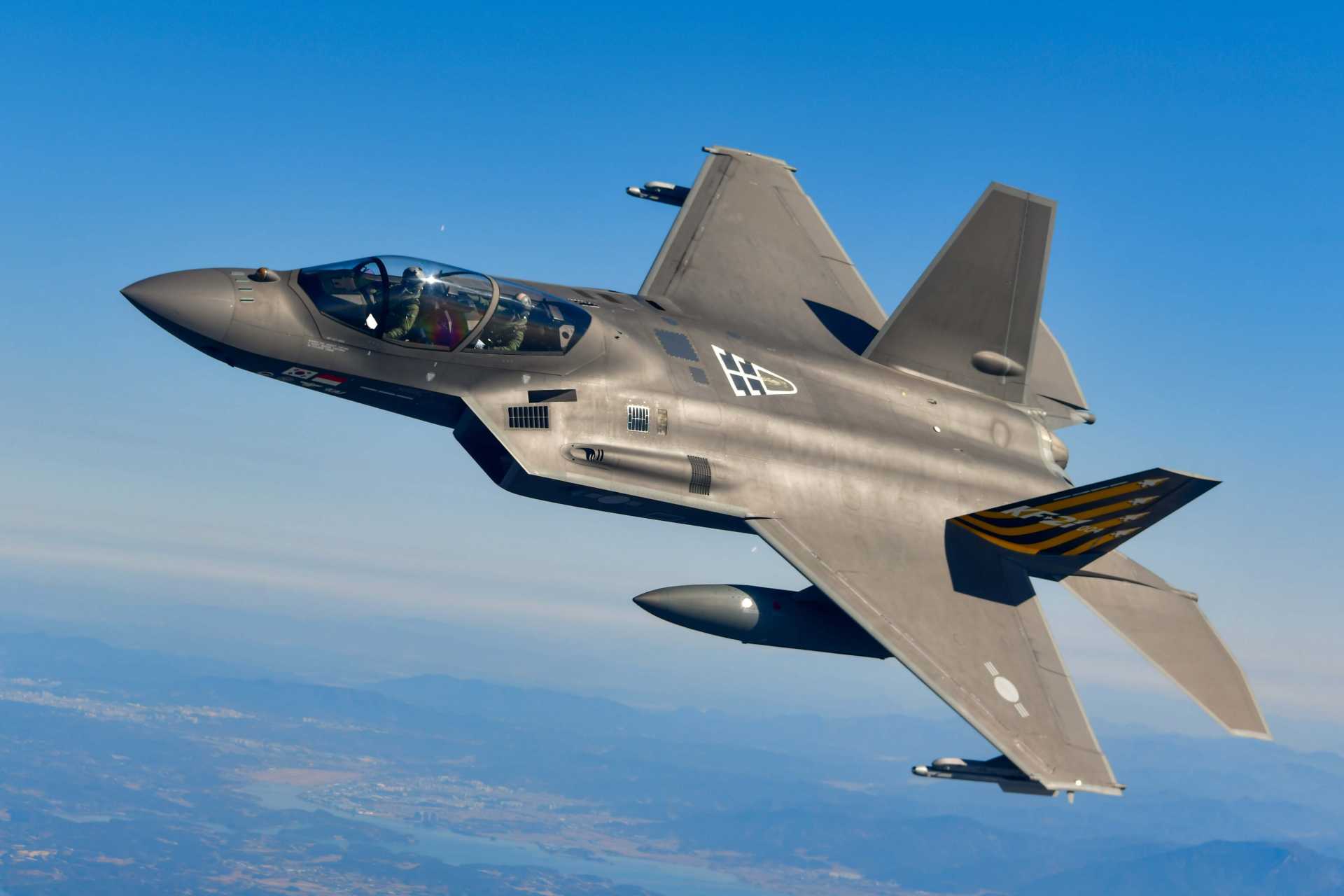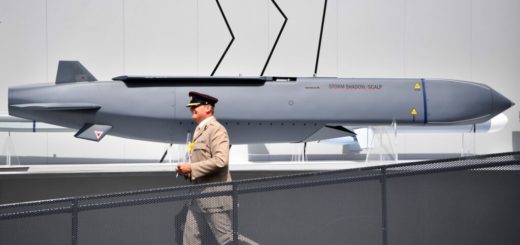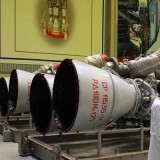South Korea’s KF-21 Boramae twin-seater fighter jet steps closer to deployment following latest test flight

{loadposition bannertop}
{loadposition sidebarpub}
On February 19, 2025, the Korea Aerospace Industries (KAI) KF-21-004, one of two twin-seater prototypes of the South Korean KF-21 Boramae fighter jet, conducted a test flight at Sacheon Air Base, South Korea. The Republic of Korea Air Force (ROKAF) Chief of Staff, General Lee Young-su, participated in the flight, marking the first instance of a non-test pilot flying the KF-21. The test focused on the aircraft’s maneuverability characteristics and performance evaluation, with specific assessments of control characteristics and avionics accuracy.Follow Army Recognition on Google News at this link
One of two twin-seater prototypes of the KF-21 Boramae fighter jet conducted a test flight that included maneuvers over the southern coast of South Korea at speeds exceeding 1,000 km/h at an altitude of approximately 4,500 meters. (Picture source: Twitter/Fighterman_FFRC)
The KF-21 Boramae is a 4.5-generation supersonic fighter jet under development as part of the Korean Fighter eXperimental (KF-X) medium-class fighter project. The program aims to enable South Korea to develop its own fighters and replace aging platforms such as the F-4 Phantom II and KF-5 Gaegoho. The project involves KAI and the Agency for Defense Development, with participation from over 225 domestic companies, 10 government-funded research institutes, and 15 universities. International contributors include Indonesia’s PTDI (now Indonesia Aerospace), Eurofighter Typhoon Limited, Lockheed Martin, and parts suppliers such as GE, Texstars, Martin-Baker, Cobham, Héroux-Devtek, and Leonardo.
The KF-21 completed its maiden flight on July 19, 2022. It obtained an interim combat suitability assessment on May 15, 2023, and secured its first mass production contract on June 25, 2024. By November 28, 2024, the aircraft had completed its 1,000th accident-free sortie. The program includes approximately 1,000 test flights, with frontline deployment expected by 2026. The ROKAF plans to introduce 120 units in the first batch, with Block 1 mass production scheduled from 2024 to 2028 for 40 aircraft and Block 2 from 2029 to 2032 for 80 aircraft. Most units will be single-seaters, with a limited number of twin-seaters for aircraft conversion training.
During the test flight, General Lee and test pilot Major Woo Hong-gyun assessed the aircraft’s control characteristics and avionics systems. The flight included maneuvers over the southern coast at speeds exceeding 1,000 km/h at an altitude of approximately 4,500 meters. The test included formation flying with the KF-16, demonstrating the KF-21’s tactical operation capability with existing ROKAF aircraft. The domestically produced Active Electronically Scanned Array (AESA) radar, developed by the Agency for Defense Development and manufactured by Hanwha Systems, was also tested.
The KF-21 design features a low-observable shape, including flush antennas, an S-Duct, flat fuselage, and a semi-buried weapons bay. The aircraft uses Radar Absorbent Material (RAM) on its canopy, wings, and tail, and Radar Absorbent Structure (RAS) in ducts and flaps. Frequency selective surface technology is applied to the radome. The aircraft is equipped with an M61A2 20mm Vulcan gun and supports various weapon systems, including AIM-9X, AIM-120, SDB, CBU-105 WCMD, JDAM, LJDAM, LGB, AGM-65, AGM-84, KEPD 350 Taurus, IRIS-T, MBDA Meteor, and domestically developed Cheonryong missiles.
The KF-21 Boramae is intended to replace older fighters, including the KF-16U by 2039 and the F-15K by 2049. The fighter integrates advanced avionics, maneuverability enhancements through triple digital fly-by-wire, Leading Edge eXtension (LEX), and variable camber wings. It also incorporates safety features such as automatic terrain following, path navigation, automatic recovery, and ground collision avoidance systems developed by Elbit Systems of Israel.
The project’s domestic production ratio started at 65%, with plans to exceed 80% through localization initiatives. Hanwha reported a 40% localization rate for the aircraft’s engine components, while government calculations indicate 20%. The KF-21 is also being developed for export, with Indonesia expecting 50 units under Block 1 production. The export variant, KF-21SA, is designed to meet international market requirements.
Additional versions of the KF-21 include the KF-21EA electronic warfare model and the KF-21N carrier-based variant. These developments may expand the aircraft’s operational roles and marketability. The twin-seater test flight contributes to validating the KF-21’s performance and safety, aligning with the program’s objective of operational deployment by 2026.

{loadposition bannertop}
{loadposition sidebarpub}
On February 19, 2025, the Korea Aerospace Industries (KAI) KF-21-004, one of two twin-seater prototypes of the South Korean KF-21 Boramae fighter jet, conducted a test flight at Sacheon Air Base, South Korea. The Republic of Korea Air Force (ROKAF) Chief of Staff, General Lee Young-su, participated in the flight, marking the first instance of a non-test pilot flying the KF-21. The test focused on the aircraft’s maneuverability characteristics and performance evaluation, with specific assessments of control characteristics and avionics accuracy.
Follow Army Recognition on Google News at this link
One of two twin-seater prototypes of the KF-21 Boramae fighter jet conducted a test flight that included maneuvers over the southern coast of South Korea at speeds exceeding 1,000 km/h at an altitude of approximately 4,500 meters. (Picture source: Twitter/Fighterman_FFRC)
The KF-21 Boramae is a 4.5-generation supersonic fighter jet under development as part of the Korean Fighter eXperimental (KF-X) medium-class fighter project. The program aims to enable South Korea to develop its own fighters and replace aging platforms such as the F-4 Phantom II and KF-5 Gaegoho. The project involves KAI and the Agency for Defense Development, with participation from over 225 domestic companies, 10 government-funded research institutes, and 15 universities. International contributors include Indonesia’s PTDI (now Indonesia Aerospace), Eurofighter Typhoon Limited, Lockheed Martin, and parts suppliers such as GE, Texstars, Martin-Baker, Cobham, Héroux-Devtek, and Leonardo.
The KF-21 completed its maiden flight on July 19, 2022. It obtained an interim combat suitability assessment on May 15, 2023, and secured its first mass production contract on June 25, 2024. By November 28, 2024, the aircraft had completed its 1,000th accident-free sortie. The program includes approximately 1,000 test flights, with frontline deployment expected by 2026. The ROKAF plans to introduce 120 units in the first batch, with Block 1 mass production scheduled from 2024 to 2028 for 40 aircraft and Block 2 from 2029 to 2032 for 80 aircraft. Most units will be single-seaters, with a limited number of twin-seaters for aircraft conversion training.
During the test flight, General Lee and test pilot Major Woo Hong-gyun assessed the aircraft’s control characteristics and avionics systems. The flight included maneuvers over the southern coast at speeds exceeding 1,000 km/h at an altitude of approximately 4,500 meters. The test included formation flying with the KF-16, demonstrating the KF-21’s tactical operation capability with existing ROKAF aircraft. The domestically produced Active Electronically Scanned Array (AESA) radar, developed by the Agency for Defense Development and manufactured by Hanwha Systems, was also tested.
The KF-21 design features a low-observable shape, including flush antennas, an S-Duct, flat fuselage, and a semi-buried weapons bay. The aircraft uses Radar Absorbent Material (RAM) on its canopy, wings, and tail, and Radar Absorbent Structure (RAS) in ducts and flaps. Frequency selective surface technology is applied to the radome. The aircraft is equipped with an M61A2 20mm Vulcan gun and supports various weapon systems, including AIM-9X, AIM-120, SDB, CBU-105 WCMD, JDAM, LJDAM, LGB, AGM-65, AGM-84, KEPD 350 Taurus, IRIS-T, MBDA Meteor, and domestically developed Cheonryong missiles.
The KF-21 Boramae is intended to replace older fighters, including the KF-16U by 2039 and the F-15K by 2049. The fighter integrates advanced avionics, maneuverability enhancements through triple digital fly-by-wire, Leading Edge eXtension (LEX), and variable camber wings. It also incorporates safety features such as automatic terrain following, path navigation, automatic recovery, and ground collision avoidance systems developed by Elbit Systems of Israel.
The project’s domestic production ratio started at 65%, with plans to exceed 80% through localization initiatives. Hanwha reported a 40% localization rate for the aircraft’s engine components, while government calculations indicate 20%. The KF-21 is also being developed for export, with Indonesia expecting 50 units under Block 1 production. The export variant, KF-21SA, is designed to meet international market requirements.
Additional versions of the KF-21 include the KF-21EA electronic warfare model and the KF-21N carrier-based variant. These developments may expand the aircraft’s operational roles and marketability. The twin-seater test flight contributes to validating the KF-21’s performance and safety, aligning with the program’s objective of operational deployment by 2026.





